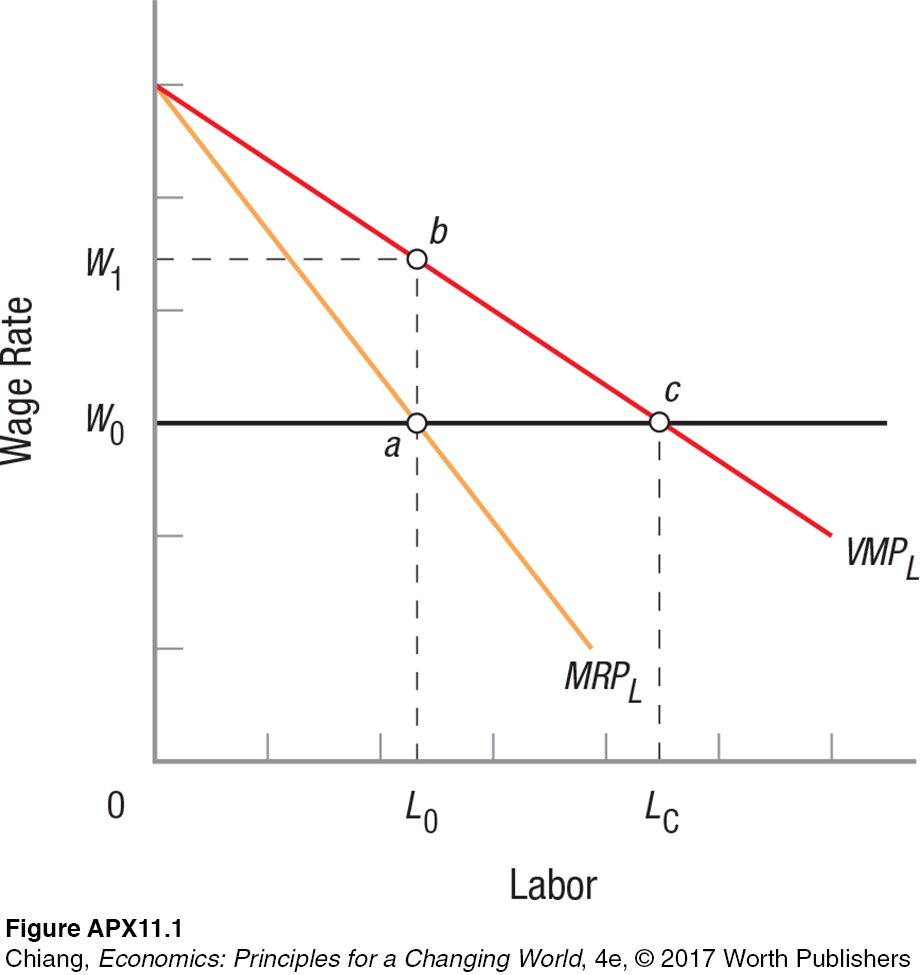Monopoly Power in Product Markets
As we know, firms that enjoy monopoly power in product markets are price makers, not price takers. Because P > MR, it follows that VMPL > MRPL. Figure APX-1 shows why. The firm depicted has monopoly power in the product market, but buys inputs in a competitive environment.

As Figure APX-1 shows, a competitive firm would equate the wage and the value of the marginal product (VMPL), hiring LC workers and paying the going wage of W0 (point c). The firm with monopoly power, however, will equate the wage and marginal revenue product (MRPL), thus hiring L0 workers, though again paying the prevailing wage W0 (point a). Therefore, although both firms hire workers at the same wage, the firm with monopoly power hires fewer workers.
monopolistic exploitation of labor Occurs when workers are paid less than the value of their marginal product because the firm has monopoly power in the product market.
This means that the value of the marginal product (VMPL) of workers in the monopolistic firm is much higher than what they are paid. Their value to the firm (point b) is W1, even though they are only paid W0. This difference is referred to as monopolistic exploitation of labor. The term is loaded, but what economists mean by it is that workers get paid less than the value of their marginal product when working for a monopolist. This is, as you might expect, a source of monopoly profits.